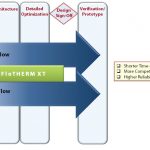In continuation to my earlier observations and anticipations (landscape1, landscape2) which came up to my expectations, I was further inspired to ponder over the macros of our ever growing semiconductor industry. We may argue the business is stagnating, we may argue that the pace of scaling is slowing, but when I look back at the year bygone, I can clearly see a thoughtful trend of consolidation in the semiconductor arena, and that is extended to even the semiconductor manufacturing equipment business. At the same time there is expansion in areas which are poised to drive the semiconductor industry going forward. Smart move!
Looking at 2013, it appears that semiconductor industry is turning around, as we see growth numbers trending towards positive ~5.2% (as per Gartner’s estimate based on world’s top10 semiconductor vendors revenue – 2012 rev $299,912M; 2013 rev $315,390M) from decline in earlier years. According to SIA (Semiconductor Industry Association) report the latest Nov 2013 rev has increased to $27.24B from $25.51B in Nov 2012, a healthy ~6.8% increase. This shows a healthy trend in store for future. Revenues from home appliances and its adjacent areas such as sensors, touch controls, smart meters etc. (not to forget smart phones :)) particularly in emerging un-saturated markets has been on the rise. Then there’s a tremendously large market of internet-of-things beaconing at us in the near future.
Having talked about a little bit on macroeconomics of semiconductors let me delve into the next level of strategic affairs in the industry. I will use my pet lenses of Business leadership, Technology leadership and IP leadership.
So, from business leadership angle, I can see consolidations among semiconductor businesses (EDA, IP, design and foundry) along with some of the adjacent areas like semiconductor equipment companies (AMAT acquiring TEL), Microsoft acquiring Nokia and Google about to buy Nest Labs which makes thermostats and smoke detectors. Without going into details with several examples, I would like to point out one distinct pattern of strengthening IP portfolio by large organizations. We know ARM is the leader in IP business. Now we see EDA veterans, Synopsys and Cadence strengthening significantly in this area through several acquisitions over last two years. It’s obvious, that’s an area to fuel growth in semiconductor industry, through internet-of-things in future.
As I had talked about IP leadership in my last article, IP is the brain child of semiconductor industry, it has its own will on whether to join with large magnets or flourish independently. While some of the niche IP organizations have joined hands with large organizations, there are others are doing well and many new IP vendors mushrooming steadily. So, this area will always be ripe, although ridden by heavy competition going forward. What will boost IP business further is internet-of-things market with very aggressive time-to-market schedules.
Coming to technology leadership – this is an interesting area, it leads business. Whenever, there is concentration in a particular business, technology takes a look from a distance and re-organizes itself to move forward from there. While we see foundries looking at 7nm node, FinFET or FD-SOI, there are other avenues growing to take More’s law further through 3D-IC. Newer tools are coming up to handle manufacturing complexities through newer, faster and cost effective methods such as Virtual Fabrication. EDA vendors are moving up the chain to handle large SoC and 3D designs through newer means such as major design decisions and sign-offs done at RTL level and maturing the tools down the line to handle everything automatically.
Looking at economics taking a growth trajectory, we can expect semiconductor industry going through significant leap with newer technologies, newer designs, newer methods and tools and newer market collaterals in the near future. Let’s be optimistic!
More Articles by Pawan Fangaria…..
lang: en_US


